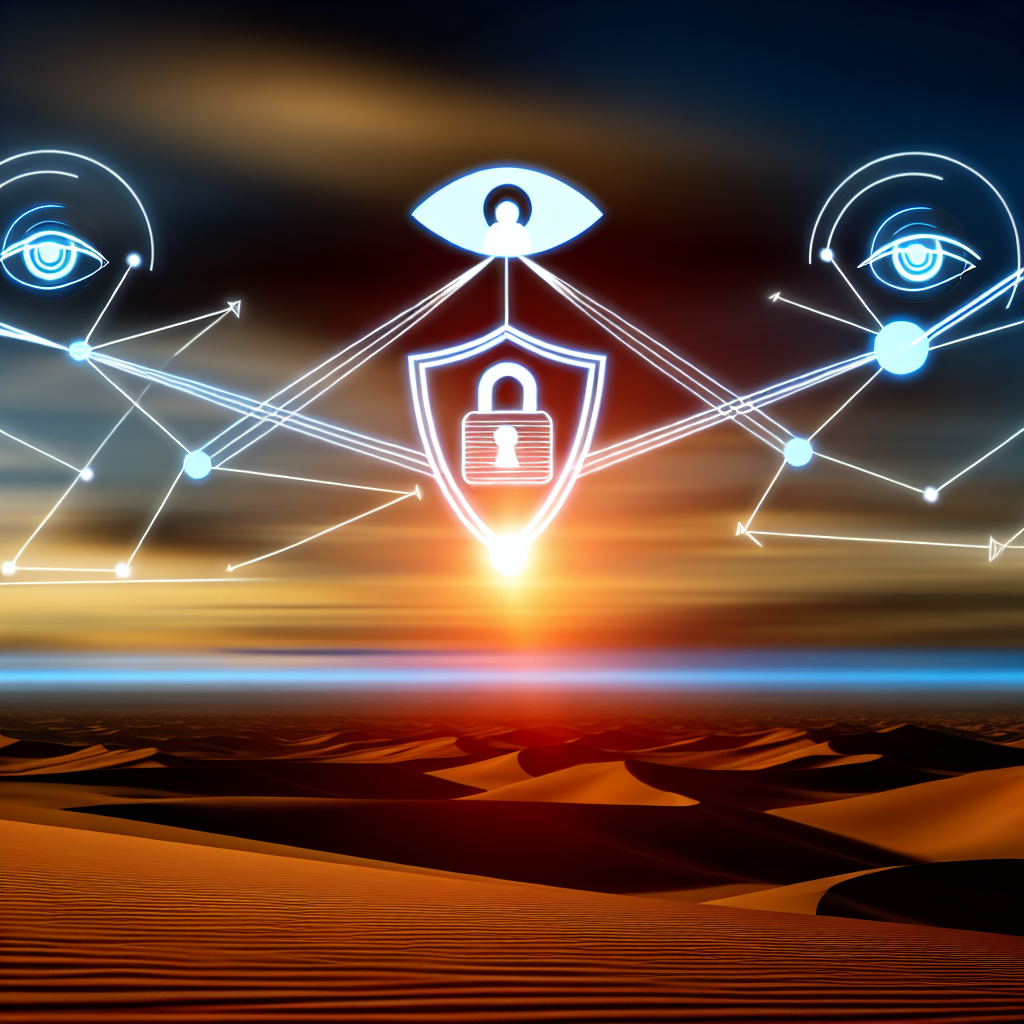Emerging Threats in 2025: What Businesses Need to Know About Cybersecurity Trends
As we approach 2025, the landscape of cybersecurity is evolving at an unprecedented pace, driven by rapid technological advancements and increasingly sophisticated cyber threats. Businesses must remain vigilant and proactive in understanding these emerging threats to safeguard their digital assets and maintain trust with their stakeholders. One of the most significant trends is the rise of artificial intelligence (AI) and machine learning (ML) in cyberattacks. Cybercriminals are leveraging these technologies to automate attacks, making them more efficient and difficult to detect. AI-driven malware can adapt to security measures in real-time, posing a formidable challenge to traditional cybersecurity defenses. Consequently, businesses must invest in AI-powered security solutions that can anticipate and counteract these intelligent threats.
In addition to AI, the proliferation of the Internet of Things (IoT) devices presents another layer of complexity. With billions of connected devices, each serving as a potential entry point for cyberattacks, the attack surface has expanded dramatically. Many IoT devices lack robust security features, making them vulnerable to exploitation. Businesses must implement comprehensive IoT security strategies, including network segmentation and regular firmware updates, to mitigate these risks. Furthermore, the integration of 5G technology is accelerating the connectivity of IoT devices, which, while beneficial for operational efficiency, also increases the potential for cyber threats. As such, businesses need to stay informed about the security implications of 5G and adapt their cybersecurity frameworks accordingly.
Another emerging threat is the increasing sophistication of ransomware attacks. Cybercriminals are not only targeting large corporations but also small and medium-sized enterprises, which often lack the resources to defend against such attacks. The evolution of ransomware-as-a-service (RaaS) has lowered the barrier to entry for cybercriminals, leading to a surge in attacks. Businesses must prioritize data backup and recovery plans, alongside employee training programs to recognize phishing attempts, which are often the initial vector for ransomware infections. Moreover, the regulatory landscape is becoming more stringent, with governments worldwide enacting laws to protect consumer data and privacy. Non-compliance can result in hefty fines and reputational damage. Therefore, businesses must ensure that their cybersecurity practices align with these regulations, incorporating privacy-by-design principles into their operations.
The human element remains a critical factor in cybersecurity. Social engineering attacks, such as phishing and spear-phishing, continue to exploit human vulnerabilities. As remote work becomes more prevalent, the lines between personal and professional digital spaces blur, increasing the risk of security breaches. Businesses must foster a culture of cybersecurity awareness, providing ongoing training and resources to help employees recognize and respond to potential threats. Additionally, the concept of zero trust architecture is gaining traction as a means to enhance security. By assuming that threats could exist both inside and outside the network, zero trust requires strict identity verification for every user and device attempting to access resources. Implementing zero trust can significantly reduce the risk of unauthorized access and data breaches.
In conclusion, as we move towards 2025, businesses must navigate a complex and dynamic cybersecurity landscape. By staying informed about emerging threats and adopting a proactive approach to cybersecurity, organizations can protect their digital assets and maintain the trust of their customers and partners. Embracing advanced technologies, fostering a culture of security awareness, and adhering to regulatory requirements will be essential strategies in mitigating the risks posed by the evolving cyber threat environment.
Data Protection in 2025: Key Cybersecurity Trends and Business Insights
As we approach 2025, the landscape of cybersecurity is evolving at an unprecedented pace, driven by technological advancements and the increasing sophistication of cyber threats. Businesses must remain vigilant and proactive in their approach to data protection, as the stakes have never been higher. One of the most significant trends shaping the cybersecurity domain is the integration of artificial intelligence and machine learning. These technologies are being harnessed to enhance threat detection and response capabilities, enabling businesses to identify and mitigate potential risks more efficiently. By analyzing vast amounts of data in real-time, AI-driven systems can detect anomalies and predict potential breaches, offering a proactive defense mechanism against cyber threats.
In addition to AI, the rise of quantum computing presents both opportunities and challenges for data protection. While quantum computing holds the promise of solving complex problems at unprecedented speeds, it also poses a threat to current encryption standards. Businesses must stay informed about developments in quantum-safe cryptography to ensure their data remains secure in the face of this emerging technology. As quantum computing becomes more accessible, organizations will need to adopt new encryption methods to safeguard sensitive information from potential decryption by quantum computers.
Moreover, the increasing reliance on cloud services and remote work has expanded the attack surface for cybercriminals. As businesses continue to migrate their operations to the cloud, ensuring robust security measures is paramount. This includes implementing multi-factor authentication, regular security audits, and comprehensive data encryption. Additionally, businesses must prioritize employee training to foster a culture of cybersecurity awareness. Human error remains one of the leading causes of data breaches, and educating employees about best practices can significantly reduce the risk of cyber incidents.
Furthermore, the regulatory landscape is becoming more stringent, with governments worldwide enacting laws to protect consumer data. Compliance with regulations such as the General Data Protection Regulation (GDPR) and the California Consumer Privacy Act (CCPA) is no longer optional but a necessity for businesses operating in the global market. Organizations must stay abreast of these regulations and ensure their data protection strategies align with legal requirements to avoid hefty fines and reputational damage.
Another critical trend is the growing importance of zero-trust architecture. This security model operates on the principle of “never trust, always verify,” requiring continuous authentication and validation of users and devices accessing the network. By implementing a zero-trust framework, businesses can minimize the risk of unauthorized access and data breaches, even if a cybercriminal manages to infiltrate the network.
In light of these trends, businesses must adopt a holistic approach to cybersecurity, integrating advanced technologies with robust policies and employee education. Collaboration between IT departments, management, and external cybersecurity experts is essential to develop a comprehensive strategy that addresses the unique challenges of the digital age. As cyber threats continue to evolve, businesses that prioritize data protection and remain adaptable to new developments will be better positioned to safeguard their assets and maintain consumer trust.
In conclusion, the cybersecurity landscape in 2025 will be characterized by rapid technological advancements and an increasingly complex threat environment. By staying informed about emerging trends and implementing proactive measures, businesses can navigate these challenges and protect their data from potential breaches. As we move forward, a commitment to continuous improvement and innovation in cybersecurity practices will be crucial for businesses aiming to thrive in the digital era.
Network Security in 2025: Essential Cyber Defense Strategies for Businesses
As we approach 2025, the landscape of network security is evolving at an unprecedented pace, driven by rapid technological advancements and increasingly sophisticated cyber threats. Businesses must stay ahead of these changes to protect their digital assets and maintain trust with their customers. One of the most significant trends in network security is the growing reliance on artificial intelligence and machine learning. These technologies are becoming indispensable tools for identifying and mitigating threats in real-time. By analyzing vast amounts of data, AI can detect anomalies and potential breaches much faster than traditional methods, allowing businesses to respond swiftly and effectively.
Moreover, the proliferation of the Internet of Things (IoT) devices presents both opportunities and challenges for network security. While IoT devices can enhance operational efficiency, they also expand the attack surface, providing cybercriminals with more entry points into a network. Consequently, businesses must implement robust security protocols to safeguard these devices, including regular software updates and strong authentication measures. Additionally, network segmentation is becoming increasingly important as a strategy to contain potential breaches. By dividing a network into smaller, isolated segments, businesses can prevent attackers from moving laterally across the network, thereby limiting the damage of any single breach.
Furthermore, the shift towards remote and hybrid work models has necessitated a reevaluation of traditional network security strategies. With employees accessing corporate networks from various locations and devices, businesses must adopt a zero-trust architecture. This approach assumes that threats could originate from both outside and inside the network, requiring continuous verification of user identities and device integrity. Implementing multi-factor authentication and end-to-end encryption are critical components of a zero-trust framework, ensuring that only authorized users can access sensitive information.
In addition to these technological strategies, businesses must also prioritize cybersecurity awareness and training for their employees. Human error remains one of the leading causes of data breaches, often due to phishing attacks or weak passwords. Regular training sessions can equip employees with the knowledge to recognize and respond to potential threats, thereby reducing the risk of successful attacks. Moreover, fostering a culture of security within the organization encourages employees to remain vigilant and proactive in protecting the network.
As regulatory requirements continue to evolve, businesses must also ensure compliance with data protection laws and standards. Non-compliance can result in significant financial penalties and reputational damage. Therefore, staying informed about the latest regulations and implementing necessary measures to meet these standards is crucial for maintaining a secure network environment.
Looking ahead, collaboration between businesses, governments, and cybersecurity experts will be essential in developing effective defense strategies. Sharing threat intelligence and best practices can help organizations stay informed about emerging threats and enhance their overall security posture. As cyber threats become more sophisticated, a collective effort will be necessary to safeguard digital ecosystems.
In conclusion, as we move towards 2025, businesses must adopt a multi-faceted approach to network security, integrating advanced technologies, robust protocols, and comprehensive training programs. By staying informed about the latest trends and proactively addressing potential vulnerabilities, organizations can protect their networks from evolving cyber threats and ensure the integrity of their digital operations.
Information Security in 2025: Understanding Cybersecurity Trends and Emerging Threats
As we approach 2025, the landscape of cybersecurity is evolving at an unprecedented pace, driven by rapid technological advancements and increasingly sophisticated cyber threats. Businesses must remain vigilant and proactive in understanding these emerging trends to safeguard their digital assets and maintain trust with their stakeholders. One of the most significant trends is the rise of artificial intelligence (AI) and machine learning in cybersecurity. These technologies are being leveraged to enhance threat detection and response capabilities, enabling organizations to identify and mitigate potential threats more efficiently. AI-driven tools can analyze vast amounts of data in real-time, identifying patterns and anomalies that may indicate a cyber attack. Consequently, businesses can respond more swiftly to incidents, minimizing potential damage.
In addition to AI, the proliferation of the Internet of Things (IoT) devices presents both opportunities and challenges for cybersecurity. While IoT devices offer increased connectivity and convenience, they also expand the attack surface for cybercriminals. As more devices become interconnected, the potential for vulnerabilities increases, necessitating robust security measures to protect sensitive data. Businesses must implement comprehensive security protocols for IoT devices, including regular updates and patches, to prevent unauthorized access and data breaches.
Moreover, the shift towards remote work, accelerated by the global pandemic, has fundamentally changed the cybersecurity landscape. With employees accessing corporate networks from various locations, businesses face heightened risks of cyber attacks. To address these challenges, organizations are increasingly adopting zero-trust security models, which operate on the principle of “never trust, always verify.” This approach requires continuous authentication and authorization of users and devices, ensuring that only legitimate entities can access sensitive information.
Furthermore, the growing threat of ransomware attacks continues to be a major concern for businesses. Cybercriminals are employing more sophisticated tactics, such as double extortion, where they not only encrypt data but also threaten to release it publicly unless a ransom is paid. To combat this, businesses must invest in robust backup solutions and incident response plans, enabling them to recover quickly from attacks without succumbing to ransom demands. Additionally, employee training and awareness programs are crucial in preventing ransomware attacks, as human error remains a significant vulnerability.
Another emerging trend is the increasing importance of data privacy regulations. As governments worldwide implement stricter data protection laws, businesses must ensure compliance to avoid hefty fines and reputational damage. This involves not only securing data but also being transparent about data collection and usage practices. Organizations must prioritize data privacy as a core component of their cybersecurity strategy, fostering trust with customers and partners.
Finally, collaboration and information sharing among businesses, governments, and cybersecurity experts are essential in combating cyber threats. By sharing threat intelligence and best practices, organizations can stay ahead of emerging threats and develop more effective defense strategies. Public-private partnerships and industry alliances play a crucial role in fostering a collective defense against cybercriminals.
In conclusion, as we move towards 2025, businesses must adapt to the evolving cybersecurity landscape by embracing new technologies, implementing robust security measures, and fostering a culture of awareness and collaboration. By staying informed about emerging trends and threats, organizations can protect their digital assets and maintain the trust of their stakeholders in an increasingly interconnected world.
Cyber Defense Strategies for 2025: Business Insights on Cybersecurity Trends
As we approach 2025, the landscape of cybersecurity is evolving at an unprecedented pace, driven by rapid technological advancements and increasingly sophisticated cyber threats. Businesses must stay ahead of these changes to protect their assets and maintain trust with their customers. One of the most significant trends is the rise of artificial intelligence (AI) and machine learning in cyber defense. These technologies are being leveraged to predict, detect, and respond to threats more efficiently than ever before. By analyzing vast amounts of data, AI can identify patterns and anomalies that may indicate a cyber attack, allowing businesses to take proactive measures to mitigate risks.
Moreover, the proliferation of Internet of Things (IoT) devices presents both opportunities and challenges for cybersecurity. While IoT devices can enhance operational efficiency, they also expand the attack surface, providing more entry points for cybercriminals. Consequently, businesses must implement robust security protocols to protect these devices and the data they generate. This includes regular software updates, strong authentication mechanisms, and network segmentation to isolate IoT devices from critical systems.
In addition to technological advancements, regulatory changes are shaping the cybersecurity landscape. Governments worldwide are enacting stricter data protection laws, compelling businesses to adopt more rigorous security measures. Compliance with these regulations is not only a legal obligation but also a competitive advantage, as consumers increasingly prioritize data privacy. Therefore, businesses must stay informed about regulatory developments and ensure their cybersecurity strategies align with legal requirements.
Another emerging trend is the shift towards zero-trust architecture, which assumes that threats can originate from both outside and inside the network. This approach requires continuous verification of user identities and device integrity, minimizing the risk of unauthorized access. By implementing zero-trust principles, businesses can enhance their security posture and reduce the likelihood of data breaches.
Furthermore, the human element remains a critical factor in cybersecurity. Despite technological advancements, human error continues to be a leading cause of security incidents. To address this, businesses must invest in comprehensive cybersecurity training programs for their employees. By fostering a culture of security awareness, organizations can empower their workforce to recognize and respond to potential threats effectively.
Collaboration is also becoming increasingly important in the fight against cybercrime. Businesses, governments, and cybersecurity firms are joining forces to share threat intelligence and develop coordinated responses to cyber attacks. This collective approach enhances the ability to detect and neutralize threats before they cause significant damage. Therefore, businesses should actively participate in information-sharing initiatives and establish partnerships with cybersecurity experts to bolster their defenses.
As cyber threats continue to evolve, businesses must adopt a multi-layered defense strategy that combines technology, policy, and human factors. This holistic approach ensures that all aspects of cybersecurity are addressed, from threat detection and response to regulatory compliance and employee training. By staying informed about emerging trends and adapting their strategies accordingly, businesses can safeguard their assets and maintain a competitive edge in an increasingly digital world.
In conclusion, the cybersecurity landscape in 2025 will be characterized by rapid technological advancements, regulatory changes, and evolving threats. Businesses must remain vigilant and proactive in their approach to cyber defense, leveraging AI, IoT security, zero-trust architecture, and collaboration to protect their assets. By doing so, they can navigate the complexities of the digital age and ensure their long-term success.
Stay ahead of the curve and protect your business by understanding the Cybersecurity Trends in 2025. Discover what you need to know to safeguard your digital assets. Learn more now!









